Noises & Signals
Contemplations on creativity in our digital age
Category: EDPX4320
Signals and Stillness – installation demonstration video. Use this password to view: currents2019.
Summary
Signals and Stillness was created in response to the bombardment of commercial media that we frequently experience from television displays in public settings. The piece reverses the relationship between the viewer and broadcast content that is intent on influencing and demanding the viewer’s attention. The large monitor in the piece “recognizes” and responds to the prolonged stationary presence of an observer – the rapidly switching excerpts of advertisements, news, sports and talk shows begin to morph into their abstracted visual and sonic essence. Multiple viewers observing in stillness influence the effect further, revealing deeper layers and patterns of abstraction. The piece explores choices of what we give our attention to – a stream of information overload, or our “present presence”.
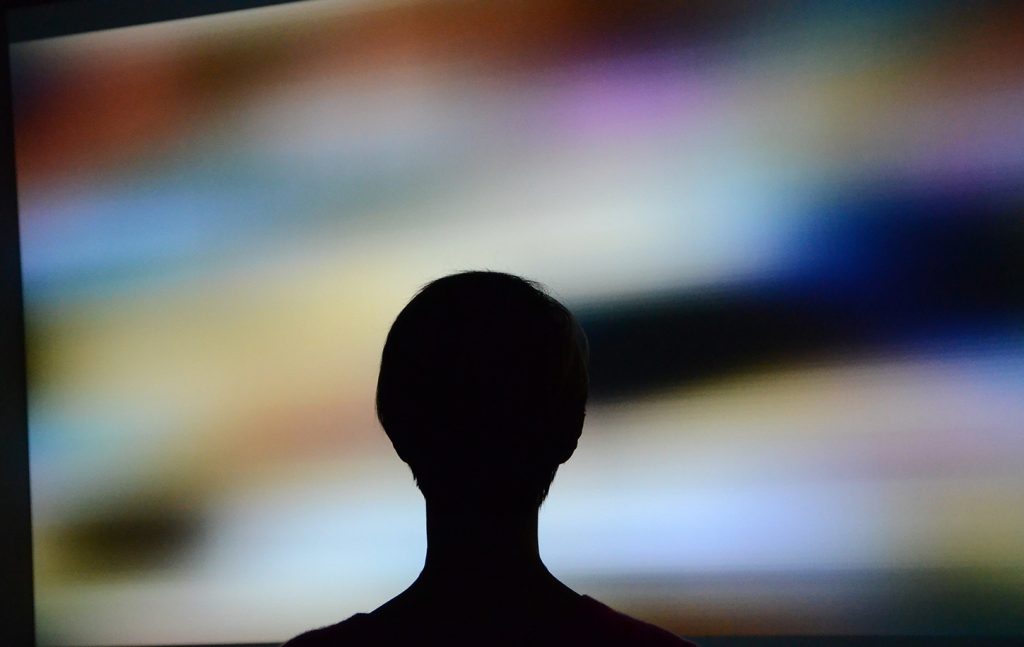
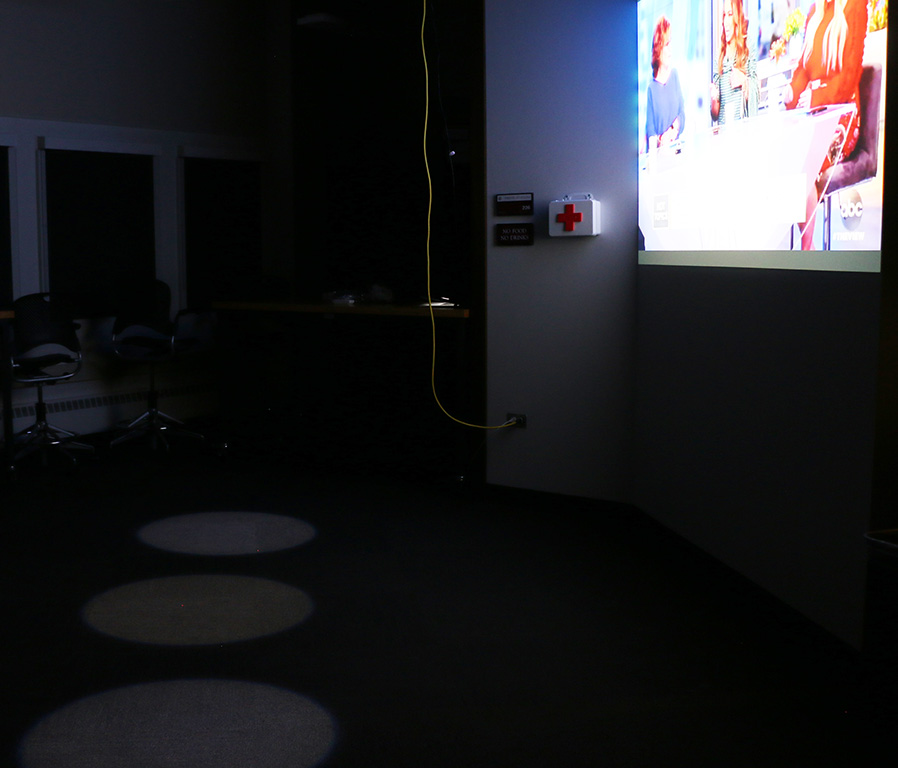

Longer description
The centerpiece of the installation is a large television monitor (between 55”-65”), elevated 5-6 feet from the floor, or a large projected display. In its default state, the display features rapidly changing clips from current advertisements, news stories, daytime talkshows and sports highlights, each played at normal speed (with normal audio) for a few seconds before switching to the next clip.
Three circles, each around 24 inches in diameter, are illuminated on the floor in front of the display by LED spotlights suspended from the ceiling. When a viewer remains still in one of the circles, their presence is detected by the system, and the display’s visuals begin to change in reaction – the playback speed slows, and the original video images are gradually transformed into abstract scenes of ethereal light and color shapes and patterns. The audio morphs into synth-like musical chords through the use of FFT filtering, delays and reverb effects. The longer a viewer remains within a circle, the more pronounced these effects become. When 2 or 3 people are standing still in the circles, additional visual and audio effects begin to appear, encouraging an experimentation with group stillness.
The installation is operated by custom programs run using Max software on a dedicated laptop/computer. The audio portion can be presented either using near field active monitors placed directly on each side of the observation circles area, or through headphones provided to the viewers within each of the circles.
For the audio transformation aspect of Signals and Stillness, I wanted to achieve an effect similar to one that I’ve worked with in Adobe Audition, where an FFT filter can be used to isolate particular frequencies, resulting in an ethereal musical-chord-like output created from any audio source (e.g., the “C Major Triad” preset of Audition’s FFT filter). I found a great starting point for this effect in the “Forbidden Planet” sketch of the main Max examples collection.
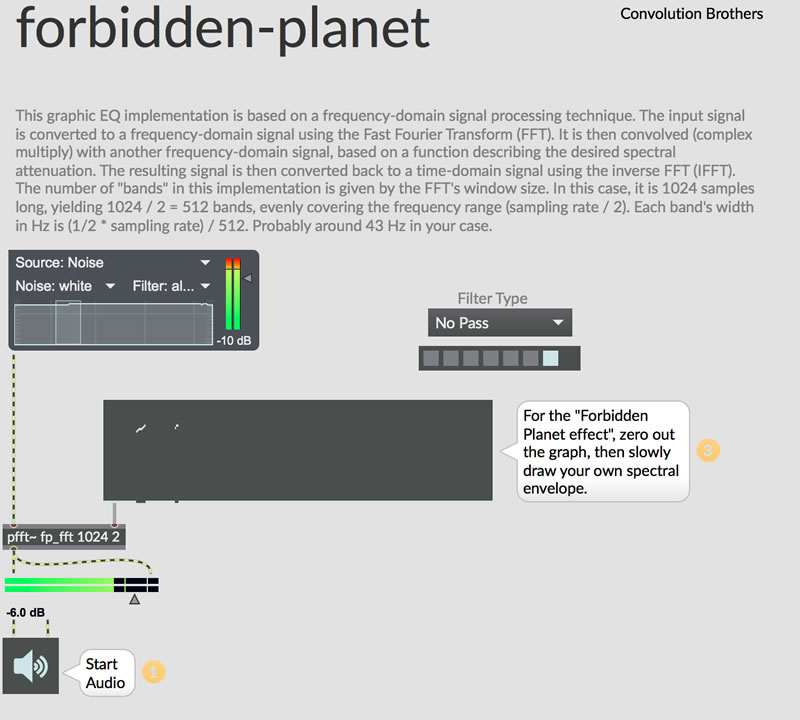
Specific values can be set in the multislider object to isolate frequencies using a “select” message – for example, sending the message “select 100 0.9” filters the output to frequencies between 4280-4320, close to a very high C# note. To have greater control over specific frequency choices, I’ve increased the value of the pfft sample size from 1024 to 8192.
Here’s an example of the resulting sound using the video clips as an audio source and creating random triads based on notes in a C major scale:
In the final piece, this filtered audio is routed into delay and reverb effects that change in their intensity based on the number of stationary observers and the length of viewers’ stillness.
For my current EDP course, I’m focusing on an idea that I’ve been planning to work on for awhile (current working title: Signals and Stillness). Inspired by being in public spaces where I’m subjected to (usually multiple) television displays that I have no control over, the large display featured in the work will assail the viewer with various clips of commercial media – news reports, advertisements, sports coverage, daytime talk shows, etc. Unlike a normal TV, this one senses when someone is standing/sitting in front of it, and begins to respond to (and reward) the viewer’s lack of motion. The longer a viewer remains in stillness, the more the display changes, altering audio of the clips into a serene music-like soundtrack, and morphing the video scenes into abstract washes of colors and shapes. The goal is to encourage a meditative state of presence in the viewer – the “noise” of the rapidly changing content that normally demands their attention is transformed into an object of contemplation, reflection and curiosity.
A preliminary layout sketch of the work:
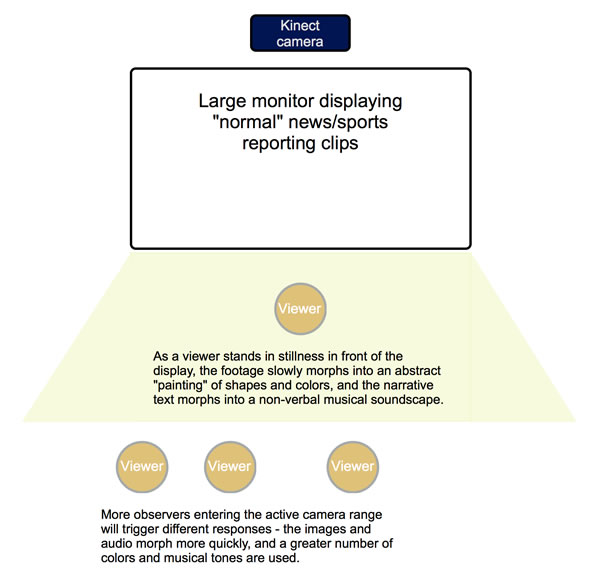
The basic programming workflow for the piece is illustrated in the diagram below:
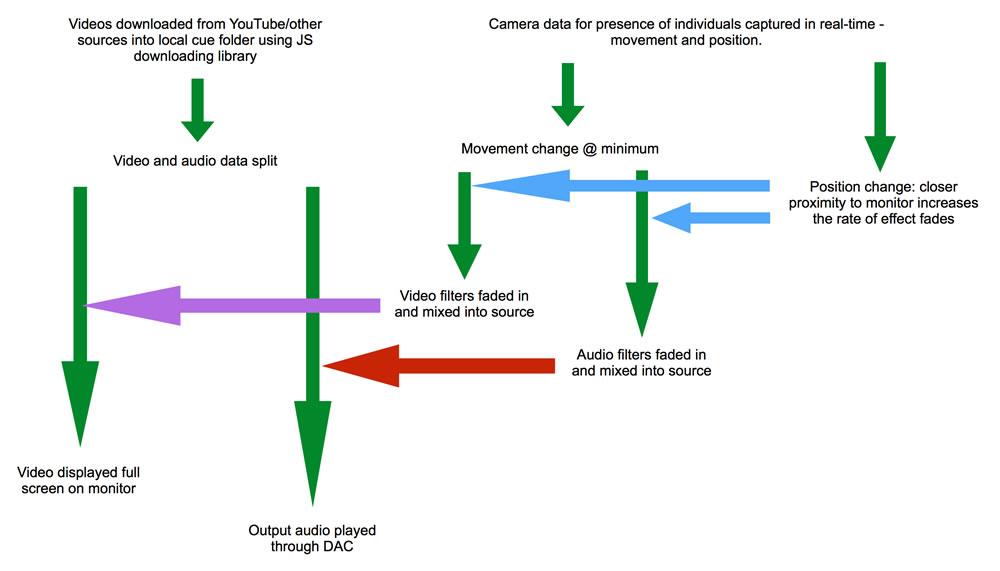
© 2024 Noises & Signals
Theme by Anders Noren — Up ↑